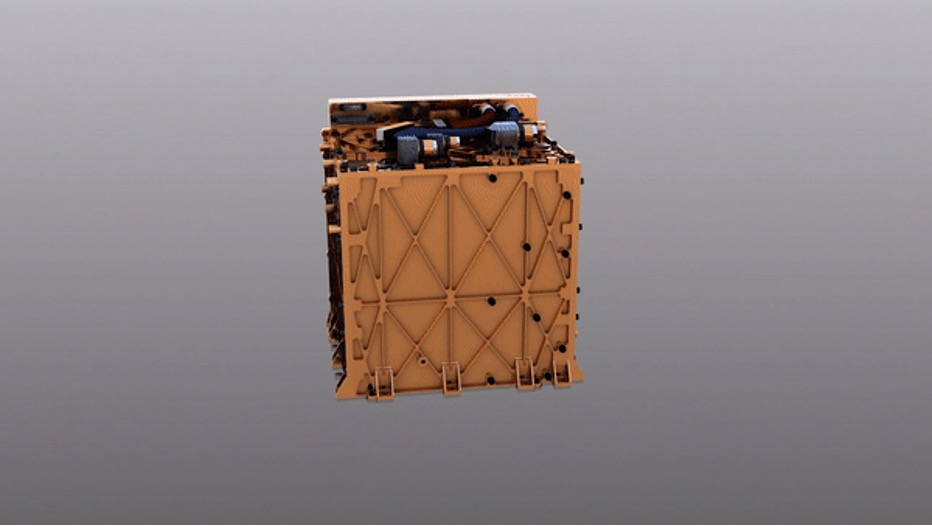Can we live on Mars? 15 arguments for and against the Colonization of the Red Planet
31st Oct 2022
Since Neil Armstrong, Buzz Aldrin, and ten other NASA astronauts walked on the Moon’s surface, flights to other planets have ceased to appear as something fantastic and unattainable. Today, a little over half a century later, we are seriously planning to colonize the Moon and send the first people to Mars. But if the creation of colonies on a natural satellite of the Earth within the next ten years looks more or less tangible, the answer to the question can we live on Mars is very ambiguous. Matt Damon’s character from the space movie Martian showed that we can. But let’s understand how reality differs from science fiction and answer the two main questions about the colonization of the red planet: how can we live on Mars, and what are our reasons for doing this?
5 reasons why living on Mars might be a good idea
NASA is not the only space agency that considers the idea of flying to Mars promising; CSNA and the European Space Agency are also working on its implementation. Elon Musk is one of the most ardent supporters of colonizing the Red Planet. So why does the richest man in the world believe that we need this, investing billions of dollars in a rather risky endeavour when we have enough problems here on Earth? Let’s find out.
Increase humanity’s chances of survival
No one means to upset you, but the Earth is doomed to perish… We will either be hit by a huge asteroid, killed by a deadly virus or have our resources depleted. Sooner or later, one of these things is bound to happen. No one knows when a global catastrophe will occur, in a thousand years or in a month, so we’d better prepare now. Mars is the closest planet to Earth on which, under certain conditions, we can survive. The sooner we learn how to do this, the more likely the human race will survive.
Create new technologies to improve life quality
Many things that were once designed for spaceflight are now helping everyday life on Earth. These are freeze-dried products, breathing masks (used by firefighters), water purification technologies, extended battery life, spring tires, motors that are now used in every portable vacuum cleaner on the planet, and much more. When we finally will be able to live on Mars, we will definitely invent other important and useful things that will help make our life both on Mars and on Earth even safer and more comfortable.
Develop new industries
Mars colonization may be the beginning of a new economic boom, and this is another reason why do we need to live on Mars. The red planet is rich in deuterium, an isotope of hydrogen, which is a powerful source of energy. Its extraction and delivery to Earth can significantly accelerate technological progress. In addition, Martian tourism and the export of goods between the planets will be developed, thus, creating newly developed infrastructure and thousands of new jobs.
Learn to terraform planets
Unfortunately, humanity has not yet found a second planet like the Earth, which would be completely habitable right from the start. Mars is no exception. The Martian atmosphere does not allow us to breathe without a spacesuit, but if we learn how to terraform, it will solve the problem of how can we live on Mars without oxygen.
Terraforming is changing another planet’s climate and atmospheric conditions to make it as close to Earth as possible. This will make many processes, like growing plants, using familiar clothes, building buildings, etc., easier for us. And Mars is the perfect place for terraforming experiments because, besides Earth, it’s the only planet in the solar system that’s even slightly habitable.
Enjoy an incredible adventure
A trip to Mars is not only a serious test, but also an attainable dream for many people. Thousands of people who have applied to participate in the Mars One experiment prove this last statement. And it’s not that difficult to understand these applicants because a single view of the stars from the spacecraft window and the majestic beauty of the cosmos is worth such a trip. The flight to Mars takes about seven months, so one will have plenty of time to enjoy the adventure. Is that not reason enough?
10 reasons, why humans can’t live on Mars
You read it right. With all the advantages of Mars colonization, this task is not yet within our power. Why? Let’s take a look at the 10 reasons why we can’t live on mars.
We need Oxygen
The atmosphere of Earth contains 21% oxygen; on Mars, there is only 1%, while the rest is mainly carbon dioxide (95%) and methane. We can live on Mars, but not under such circumstances because such air composition is not suitable for our species. Of course, we invented spacesuits long ago and now successfully use them to breathe air from cylinders mounted on our backs. But these cylinders have to be regularly refilled. And where should we get oxygen on a planet if it is practically absent in its atmosphere? We would have to bring it along, which is very expensive.
Just think about it. Four astronauts need 25 metric tons of oxygen to get to Mars and only 2 tons to live on it for a year. But this is only half of the problem. If we are going to fly back, we will need 33 tons of rocket fuel, in which liquid oxygen acts as an oxidizer. This means that we need to carry even more.
If we can find a way to extract oxygen on Mars, one of the main problems of human expansion into space will be solved. And NASA is already working on it as part of the Mars Oxygen In-Situ Resource Utilization Experiment (MOXIE). Last April, a small device mounted on the Mars rover Perseverance for the first time produced oxygen from Martian carbon dioxide, a molecule made of one carbon atom and two oxygen atoms. MOXIE is expected to extract oxygen at least nine more times during one Martian year (which equals almost two Earth years). The only minus so far is the extraction quantity. MOXIE is designed to extract only 10 grams of oxygen per hour, but if this experiment succeeds, NASA will solve this problem, too.

Food
Obviously, a person needs food to survive, and Mars has even less food than oxygen. That is, none at all. And we’re facing a similar dilemma — either take food with us or learn how to obtain it on Mars. The first option makes the Martian colony too dependent on Earth’s supplies, significantly reducing the colony’s chances of survival. This leaves us with the second option, which is not yet feasible.
Let’s be honest; growing potatoes on Mars is much more difficult and different from what Matt Damon did in the movie. Earthly fruit and vegetables need appropriate conditions for growth — sunlight, oxygen, temperature — to give the harvest. That is why food on Mars will have to be cultivated in greenhouses with a perfectly controlled environment. But even then, the choice will be extremely scarce and, perhaps, not nutritious enough compared to earthly food.
Water
A person can survive for a month without food but without water — a maximum of a week. We do not lack water on Earth, but is there any on Mars? Fortunately, yes; not in liquid form, but as ice and only in certain places. Assuming that we get to these places, dig this ice out, and put it through the distillation process, how long can we live on Mars to do it? Well, we will have to do this in any case because water will be necessary not only for drinking but also for watering plants; and, most importantly, for obtaining liquid rocket fuel.
Pressure
Do you still want to know, if is it possible to live on Mars? Then, your trouble is only getting started. What else do we need to live on Mars? Airtight suits and houses. The thing is, the pressure on Mars is only 4% of the pressure on Earth, which is lethal for humans. If you took a breath on Mars, your lungs simply would not be able to exhale the air. Airtight suits are necessary to create a comfortable environment for humans, including normalizing the pressure. The same applies to the dwellings on Mars.
Don’t forget about radiation
The Martian atmosphere is not thick enough to shield the planet’s surface from solar radiation. That is why its level is about 17 times higher than on Earth. This means that everything we use on Mars must be protected from radiation. One of the possible solutions to this problem is an underground communication system the radiation will not penetrate. But constructing such a system is another problem.
Energy
It is very cold on Mars; the temperature during the day barely exceeds 20 degrees Celsius, and at night, it can drop to minus 80 degrees. How can we live on mars if it’s so cold? Heating people, housing, greenhouses, and vehicles require a lot of energy, and there is little of it on Mars. There is no oil and gas on the planet, and dust storms seriously hinder the penetration of sunlight. We will need high-capacity batteries to store energy, but ideally, only nuclear energy can fully solve the problem, which means that the Martian colony will need a small nuclear power plant. So, let’s keep counting the expenses.
Housing
There are no building materials known to us on Mars, and it is impractical to bring them from Earth because of their weight. The way out can be underground facilities or using very light construction materials, such as polymers, fabric, and Martian ice. In 2018, NASA unveiled the concept of MARS Ice Home, which is an inflatable torus with a protective layer of ice water, acting as a shield against radioactive emissions and dust storms. The construction of such a house is estimated to take about 400 days. But let’s not forget that, first, we need to get the ice, and we will need some Mars housing to live in while we’re at it.
Communication problem
The average distance from Earth to Mars is 140 million miles, and modern means of communication need about 20-25 minutes to transmit a message over such a distance. Just imagine how this complicates the colonists’ communication with the Earth, especially in emergencies, when a second of delay can cost someone their life.
We need a faster way, and it a laser can become one. Mars has every chance of becoming the first place where NASA’s laser communications relay will be used. This technology is currently in the proof-of-concept stage, but it looks very promising.
Psycho-emotional strain
Travelling to another planet will be an extremely difficult test for the psyche. Besides spending seven months of isolation in the spacecraft, accompanied by the same set of people, you will need to spend seven months more if you expect to return to Earth. You need people you know well and can trust. That is why couples or even entire families will be trained for flights to Mars. Still, this will only partially alleviate the difficulties because Mars will also put pressure on you — a harsh, cold environment, unforgiving of mistakes and weakness. These challenges are not for everyone.
Motivation
It’s always hard to be first. One needs great motivation and determination to leave earthly joys and go to unexplored places, risking everything for the sake of saving the human race. How long until we can live on Mars will depend on such passionaries. After all, dreaming is one thing, but making dreams come true is quite another.
Elon Musk is approaching his dream of Mars a little closer every day. SpaceX is in the final stages of testing its new Starship space delivery system, which has been in development for about ten years. The spacecraft is designed for 100 tons of payload, will have compartments for 100 astronauts, and will be able to refuel in orbit. The company promises that by 2030, Starship will deliver the first NASA cargo and astronauts to Mars. After that, we may finally answer the question, can we live on Mars?






Thank you for your comment! It will be visible on the site after moderation.